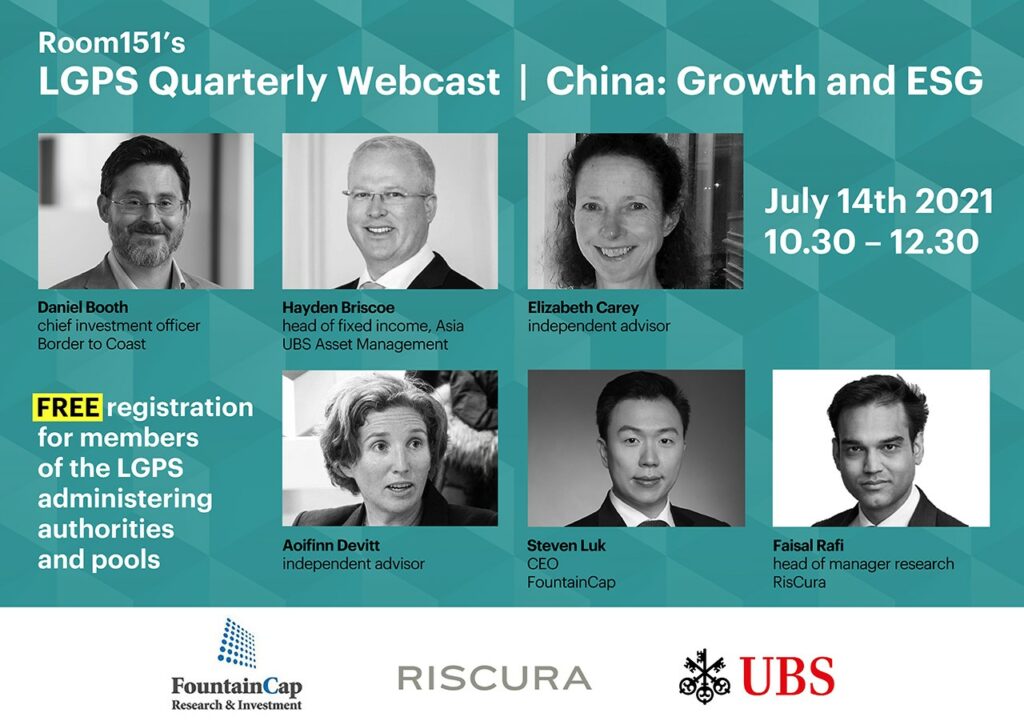
The future is looking rosey for funding but, argues Robert Bilton, there is still longevity, climate change and the future cost of benefits to worry about.
With less than a year until the next round of LGPS valuations at 31 March 2022, one of the questions on most people’s lips will be: “Are we 100% funded?”.
Such a simple question deserves a simple answer—yes, at the 2022 valuation every LGPS fund will be 100% funded.
In a world which is beset with uncertainty around ending lockdown, a possible third wave and importantly, the release date of the next Bond film, such certainty around next year’s funding position is surprising. Even more so when it is coming from an actuary.
However, as with most things that appear simple, complexity is hidden by the single summary funding level statistic. The funding level is linked to the assumptions made about the future, the key assumption being the level of investment returns that will be generated by a fund’s assets. Generally, the higher the assumed return, the higher the funding level (and vice versa).
“If”
At the 2019 valuations, the total funding level for the LGPS (measured on local assumptions) was 98%. However, if every fund had assumed a future investment return of 4.3% per annum, then the funding level would have been 100%.
Or, pessimistically, if the assumed return had been 3.4% per annum, then the funding level would have been 85%. And optimistically, if the assumed return was 5.6%, then the funding level would have been 125%.
This “if” is very important when thinking about the funding level and is the reason we can be so confident that every LGPS fund will be 100% funded at 2022: A fund will be 100% funded if it can achieve a certain level of future investment return.
Understanding the absolute level of required investment return is helpful, but the real insight comes from knowing how likely it is that the fund’s investments will achieve this return.
At 2019, the likelihood of LGPS funds collectively achieving the required return of 4.3%, was just over six in 10. At 31 March 2021, we estimate that the required return has fallen to 3.5%, which now has just over a seven in 10 likelihood of being achieved.
In other words, 100% funding at March 2021 is better than 100% funding at 2019. And similarly, 100% funding at the 2022 valuation will again be different.
Other risks
Whilst this information helps better understand the exposure to investment risk, it will not give you a full picture of all the risk inherent in a LGPS funding strategy.
Other key risks to get grips with at 2022 are longevity, climate change and the future cost of benefits.
The ongoing pandemic will be a significant consideration when thinking about how future life expectancies may evolve. Club Vita’s recent paper focuses on this issue in detail, and discusses how the pandemic may have either a positive or negative impact on funding.
Climate change is a key risk for the LGPS with its open—ended time horizons. While no-one can say for sure what the impact of climate change will be, we can look at scenarios representing a range of possible climate futures. These scenarios can then be used to “stress test” the resilience of your funding strategy; both the impact on assets and liabilities.
It’s tempting to focus on the past service funding position because of the simple funding level statistic and the positive outlook. However, for most employers, their key concern will be contribution rates, both current levels and future direction.
Given that two-thirds of the LGPS benefit payments made over the next 50 years will be in respect of benefits yet to be earned—and that 80% of the average LGPS employer contribution is in respect of that new benefit accrual—most of the focus should be on how best to manage the future cost of benefits.
Crystal ball
Finally, to avoid accusations of ducking the hard questions, we predict the outlook for the 2022 valuations.
Continuing our attempt to avoid actuarial vagaries, we currently expect that the valuation will be relatively steady in terms of contribution rate outlook. Although investments have performed well since 2019, these gains are likely to be countered by an increase in the cost of future benefit accrual.
But whatever the outcome, the key to making the 2022 valuation successful will be working with your actuary to understand in depth the exposure to future funding risks and the likelihood that the current strategy will provide enough monies to pay future benefits.
Robert Bilton is head of LGPS valuations at Hymans Robertson.
Photo by James Hose Jr on Unsplash.
—————
FREE monthly newsletters
Subscribe to Room151 Newsletters
Room151 Linkedin Community
Join here
Monthly Online Treasury Briefing
Sign up here with a .gov.uk email address
Room151 Webinars
Visit the Room151 channel















